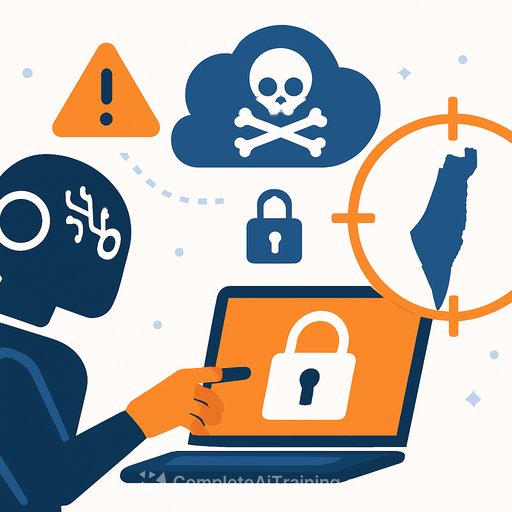HP's restructuring and memory cost surge: what Operations leaders should do now
HP plans to cut 4,000-6,000 jobs by 2028 and save $1 billion through an AI-led redesign of its processes. At the same time, the company warned that memory chip costs will pressure margins in the second half of fiscal 2026, with an estimated $0.30 per share impact.
For Operations, this points to two near-term risks: service continuity as teams are reshaped, and higher pricing as memory costs roll into production. Expect the picture to look steady through the first half of FY26, then tighter after.
What HP said (fast facts)
- Job cuts: 4,000-6,000 positions by 2028 across product development, internal operations, and customer support.
- Restructuring costs: ~$650M, with ~$250M in FY2026.
- Savings plan: $1B gross run-rate over three years; 20% to product innovation, 40% to customer satisfaction, 40% to productivity.
- AI-led process redesign: pilots over the last two years moving to full deployment across development, service, and operations.
- Memory warning: higher DRAM costs to hit profitability in 2H FY2026; mitigation via supplier diversification, lower-memory configs, and price increases. Inventory on hand covers 1H FY2026.
The analyst read
Some analysts argue this is more cost containment than near-term AI productivity. As Sanchit Vir Gogia put it, "soft PC demand, surging component prices, and margin pressure" are doing the heavy lifting.
Either way, your planning assumptions should change now, not later.
What this means for Operations
Service delivery could wobble as support orgs shift. Warranty turnaround and inventory visibility are the first places to feel it.
Pricing is likely to drift up where memory is a material part of the BOM. Expect more constraints on configuration flexibility and lead times as vendors optimize around fewer SKUs.
90-day action plan
- Lock SLAs: Reconfirm response, repair, and replacement times. Add explicit credits for misses and name the escalation chain by title and region.
- Get org maps: Request updated account, support, and depot contacts. Make sure after-hours coverage and RMA depot addresses are current.
- Protect pricing: Add a memory price index clause tied to a public benchmark (e.g., TrendForce) with caps, floors, and notice periods.
- Multi-source risk: Qualify a second vendor for top configurations. Pre-approve alternates for critical parts and memory SKUs.
- Buffer inventory: Hold spares for high-failure or long-lead parts. For endpoints, stage a rolling 60-90 day buffer by site or region.
- Audit warranties: Verify onsite vs. depot coverage, DOA windows, and cross-ship privileges. Add loaner pools for executive and field roles.
- QA checks: Track DOA and MTBF weekly during the transition. Raise issues fast-don't wait for quarterly reviews.
Buying under memory inflation
- Right-size RAM: Test 16GB vs. 32GB on real workloads and lock the minimum that meets performance SLAs.
- Modularize: Prefer configurations that allow later memory upgrades without voiding warranties.
- Time your buys: Pull forward purchases for 1H FY2026 while inventory is favorable. For 2H, use options to adjust volume and defer deliveries.
- Lease vs. buy: Compare TCO under rising memory costs. Leasing with fixed uplift caps can blunt volatility.
- Vendor or third-party memory: Where policy allows, validate certified third-party memory to create negotiation leverage.
Questions to put in front of your HP team
- Which support sites and teams are changing in my regions? What coverage model replaces them?
- What is the current average and 90th percentile for warranty turnaround by product line?
- How will RMA priority be handled during the transition, and what credits apply for misses?
- What inventory levels exist by config for the next two quarters? How often will those be updated?
- What price protections exist for memory-related increases in 2H FY2026?
- What's the escalation path if depot or parts availability slips?
Context across the vendor set
HP's move sits alongside workforce reductions at Dell, Lenovo, and HPE. Many vendors are trimming product portfolios, centralizing operations, and leaning harder into AI platforms, services, and cloud delivery.
That shift can be healthy long term. The risk window is the transition. Focus on execution now, not promises later.
What to watch through FY2026
- HP guidance: Gross margin commentary and any changes to FY2026 outlook.
- RMA and ticket SLAs: Track against pre-restructure baselines.
- Spot and contract DRAM trends: Use external indices like TrendForce and market trackers such as IDC PC market updates.
- Lead times: Monitor shifts in delivery windows for high-memory configs.
- Quality metrics: DOA rates, field failures, and firmware/driver hotfix cadence.
AI talk vs. operational reality
HP says the savings come from AI-enabled process redesign. That may pay off, but it takes time to rewire workflows and prove gains at scale.
Plan as if the next 12-18 months will be defined by cost control and simplification. Structure contracts and support to withstand that environment.
Upskilling your team for AI-driven ops
If you're rebuilding processes with AI, give your team the skills to make it stick. Curated training by role and automation use cases can help you move from pilots to production.
A request for comment to HP remains unanswered.
Your membership also unlocks:






